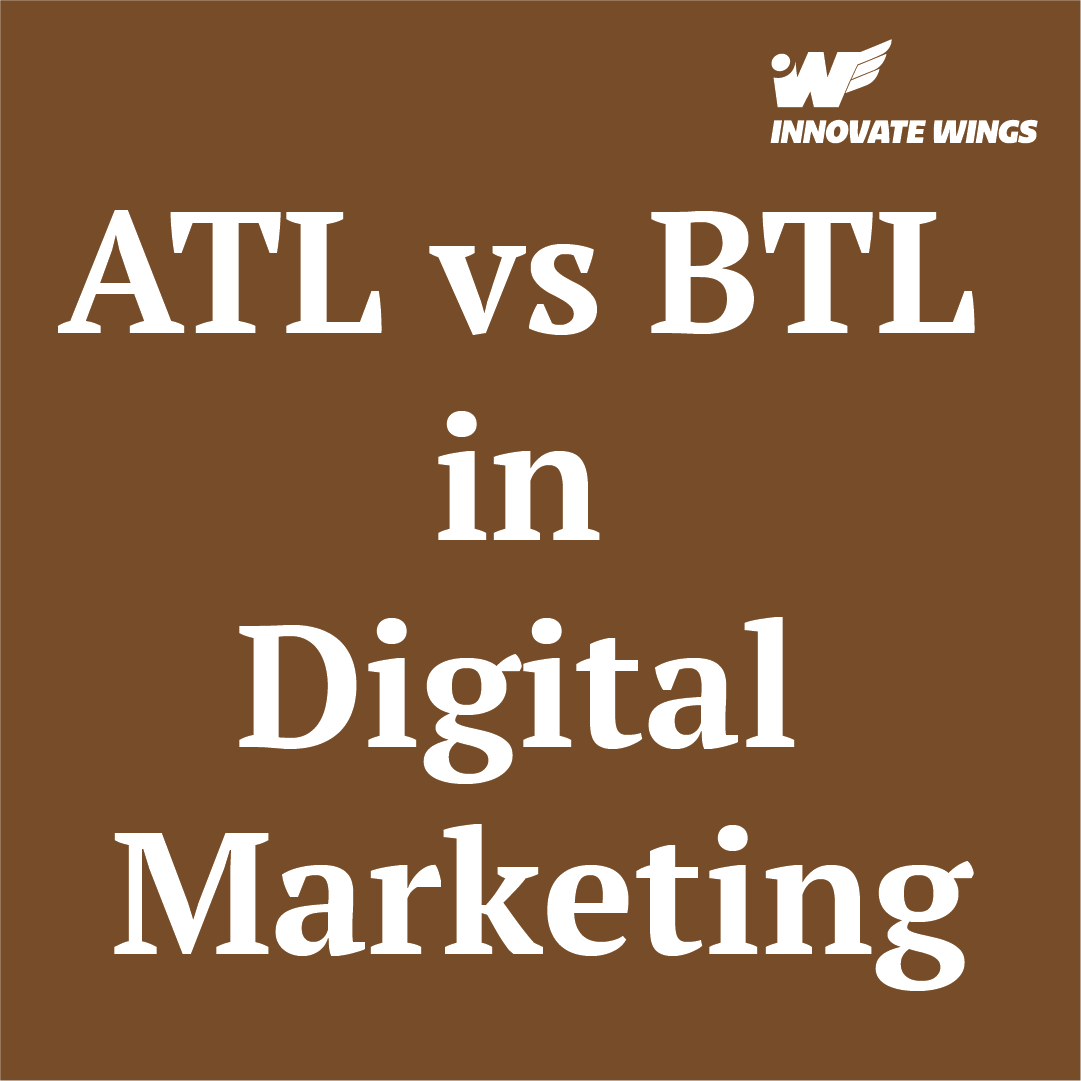

Understanding ATL and BTL in Digital Marketing: A Comprehensive Guide
In the ever-evolving world of digital marketing, it is essential to understand the distinction between ATL (Above The Line) and BTL (Below The Line) strategies. Originally rooted in traditional marketing, these concepts have seamlessly transitioned to the digital space, offering marketers versatile approaches to engage their audiences. Let’s explore how ATL and BTL are applied in digital marketing, their characteristics, and how combining both can amplify your brand’s impact.
What is ATL in Digital Marketing?
ATL refers to mass-marketing strategies aimed at reaching a broad audience. These strategies focus on brand awareness, visibility, and creating a lasting impression on as many people as possible through wide-reaching online channels.
Key Characteristics of ATL in Digital Marketing:
👉🏻 Wide Reach: Targets a large, often general audience through digital platforms.
👉🏻 Brand Awareness: Prioritizes visibility over direct conversions.
👉🏻 Mass Media: Leverages platforms like social media, search engines, and video-sharing websites to reach a global audience.
👉🏻 Measurement Challenges: Focuses on metrics such as impressions and reach, which are less tied to direct actions or ROI.
Examples of ATL in Digital Marketing:
👉🏻 Display Ads: Banner ads or video ads displayed on websites and apps.
👉🏻 Social Media Ads: Sponsored posts and campaigns on platforms like Facebook, Instagram, LinkedIn, and Twitter.
👉🏻 YouTube Ads: Pre-roll ads and sponsored content to capture user attention.
👉🏻 Programmatic Advertising: Automated ad buying for extensive reach across platforms.
👉🏻 Search Engine Marketing (SEM): Paid search ads on Google or Bing.
👉🏻 Influencer Marketing: Collaborating with influencers to promote your brand to their broad follower base.
What is BTL in Digital Marketing?
BTL in digital marketing focuses on targeted, personalized, and engaging strategies designed to connect with specific audience segments. Unlike ATL, BTL aims to drive direct actions like conversions or sales by fostering a deeper connection with potential customers.
Key Characteristics of BTL in Digital Marketing:
👉🏻 Targeted Approach: Focuses on specific audience segments or individuals.
👉🏻 High Engagement: Utilizes personalized content or offers to encourage interaction.
👉🏻 Lower Cost: Less expensive than ATL due to its narrower focus.
👉🏻 Measurable Results: Easier to track outcomes such as click-through rates, conversions, and form submissions.
👉🏻 Examples of BTL in Digital Marketing:
👉🏻 Email Marketing: Personalized newsletters, offers, or promotions.
👉🏻 Content Marketing: Targeted blog posts, whitepapers, or case studies for niche audiences.
👉🏻 Affiliate Marketing: Partnering with affiliates to generate specific leads or sales.
👉🏻 SMS Marketing: Direct promotions via text messages.
👉🏻 Retargeting Ads: Engaging users who have previously interacted with your brand.
👉🏻 Lead Generation Campaigns: Using forms, quizzes, or downloadable content to attract potential customers.
👉🏻 Referral Programs: Incentivizing existing customers to refer others to your brand.
👉🏻 Online Communities and Forums: Building relationships and engaging in specialized groups.
Key Differences Between ATL and BTL in Digital Marketing
| Aspect | ATL (Above The Line) | BTL (Below The Line) |
|---|---|---|
| Reach | Wide, general audience through mass platforms | Targeted, specific audience |
| Focus | Brand awareness and visibility | Direct engagement and conversions |
| Cost | Higher cost due to broad reach | Lower-cost, focused campaigns |
| Examples | Social media ads, display ads, YouTube ads | Email marketing, retargeting, referral programs |
| Measurement | Impressions and reach | Conversions, actions, and ROI |
The combination of ATL and BTL: TTL (Through The Line)
To maximize their digital marketing efforts, many brands opt for a TTL (Through The Line) approach that combines both ATL and BTL strategies. By integrating the broad reach of ATL with the personalized engagement of BTL, brands can achieve both visibility and actionable results.
How TTL Works:
ATL for Awareness: A brand runs a wide-reaching Facebook ad campaign to generate initial interest and visibility. BTL for Engagement: Simultaneously, the brand uses email marketing and retargeting ads to convert users who interacted with the initial campaign.
Benefits of TTL:
👉🏻 Broadens awareness while nurturing specific customer segments.
👉🏻 Balances brand-building efforts with measurable, actionable outcomes.
👉🏻 Enhances ROI by leveraging the strengths of both approaches.
What does it all mean?
Understanding and implementing ATL and BTL strategies in digital marketing can significantly enhance your brand’s effectiveness. While ATL helps establish visibility and awareness on a larger scale, BTL fosters meaningful connections and drives conversions.
By combining these approaches through a TTL strategy, your team can create a comprehensive marketing plan that ensures your brand remains both seen and engaged, ultimately driving success in today’s competitive digital landscape With Innovate Wings .